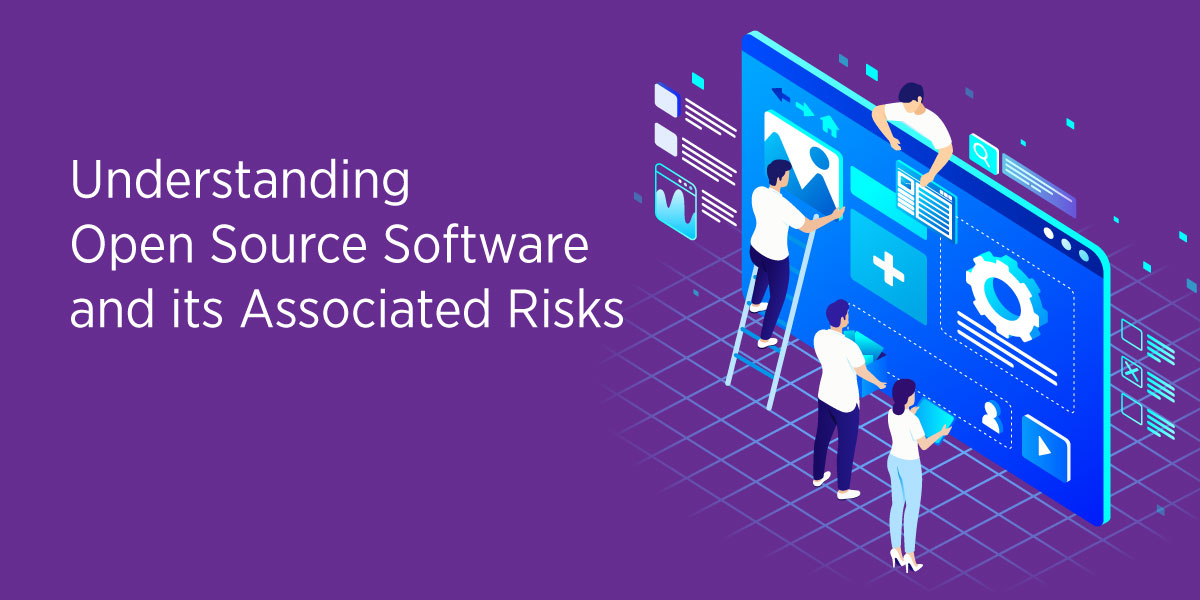Necessary cookies are absolutely essential for the website to function properly. These cookies ensure basic functionalities and security features of the website, anonymously.

Understanding Open Source Software and its Associated Risks
Open Source Software (OSS) refers to software with source code that is accessible for anyone to inspect, modify and enhance. These software projects are collaboratively developed and maintained, under licence that allow free usage, modification and distribution. OSS promotes a decentralised model of software development that encourages transparency, collaboration and community-oriented development. The open-source movement has given birth to notable software including the Linux Operating System, the Apache HTTP Server and the Mozilla Firefox browser.
Open Source Evolution and Trends for 2024
Corporate involvement in OSS
Large corporations like Google (with Kubernetes) and Meta (with React) have significantly contributed to OSS, often transforming internal solutions into community-driven projects. This corporate involvement has led to an ecosystem of robust software tools but also raises concerns about the balance between profit motives and the open source ethos. At what point does leveraging open source community involvement by corporations become exploitation?
Generative AI in OSS
The integration of generative AI, such as GPT-4, into OSS has been transformative, contributing to the rapid development of AI-powered applications. Github’s data from 2023 showed a significant increase in generative AI projects, highlighting the technology’s growing mainstream adoption in software development. However, generative AI is still not fully reliable and can make mistakes. Open source must make sure guidelines are in place to ensure unreliable generated code is not being pushed onto projects.
Key OSS Tools for Businesses
TensorFlow, PostgreSQL, Docker and others have become essential tools, enabling businesses to handle diverse needs like AI/ML applications, database management and containerisation.
Increased SBOM Usage
SBOM, or ‘Software Bill of Materials’, is essentially an inventory list for software components. It details the components in a piece of software, enabling organisations to track software versions, dependencies and vulnerabilities. This is crucial in today’s cybersecurity landscape, as more SBOMs will improve open source security and governance by enabling organisations to apply updates efficiently and move away from end-of-life open source software i.e. software in the end-of-support phase of the OSS lifecycle.
Security Risks in Open Source Software
Open Source Software, while beneficial, is not immune to security risks. The very nature of OSS, being open and accessible, can make it a target for cyber attacks. One of the most notable incidents was the Heartbleed bug in OpenSSL, a cryptography library, which exposed millions of websites to data theft. Another significant breach was the Equifax data breach, attributed to an unpatched vulnerability in Apache Struts, an open source web application framework. These incidents highlight the importance of diligent security practices in managing OSS.
Evaluating OSS for Startups
For startups, leveraging OSS’ numerous advantages, including cost savings, flexibility and access to cutting-edge technologies, is attractive. However, it also requires a careful approach to security, compliance and long-term sustainability.
Addressing Security Concerns
Startups must prioritise their OSS components. Regularly updating software, conducting security audits and participating in the OSS community to stay informed about vulnerabilities and patches are essential practices. Implementing SBOMs can further enhance security management.
Navigating Compliance and Sustainability
Compliance with OSS licences and contributing to the sustainability of OSS projects are vital. Startups can participate in and contribute to the OSS community, ensuring a continuous improvement and support system for the software they rely on.
Long-Term Strategic Planning
Incorporating OSS into long-term strategic planning requires a balance between leveraging OSS innovations and managing potential risks. Startups must develop a proactive approach to integrate OSS tools into their data analytics solutions, keeping in mind the evolving nature of OSS and the fast-paced changes in technology.
Conclusion
In conclusion, Open Source Software represents a critical component in the technology ecosystem, especially for data analytics startups. While offering numerous benefits, it also presents unique challenges in terms of security, compliance and sustainability. Navigating these challenges successfully will be key for startups looking to harness the full potential of OSS in their journey towards innovation and growth in the coming years.






